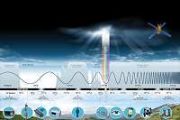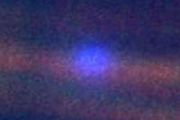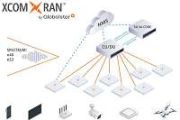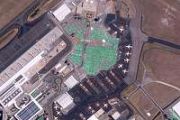Space Careers
Latest News ...
Japan’s H3 suffers second-stage anomaly, QZS-5 satellite lost...
Japan’s flagship H3 rocket suffered an issue with its second stage late Sunday resulting in the los...
Possible "superkilonova" exploded not once but twice
Pasadena CA (SPX) Dec 17, 2025
When the most massive stars reach the ends of their lives, they bl...
Proba-3 mission closes gap in inner solar corona...
Berlin, Germany (SPX) Dec 19, 2025
Proba-3 has spent its first year in orbit generating more than...
Clues to the migration path of hot Jupiters...
Tokyo, Japan (SPX) Dec 16, 2025
The first exoplanet discovered in 1995 was a hot Jupiter, a Jupit...
Smart modeling framework targets 6G spectrum chaos in...
Tokyo, Japan (SPX) Dec 16, 2025
As wireless systems evolve from 5G to 6G, engineers are working t...
Search for life should be top science priority...
Los Angeles CA (SPX) Dec 22, 2025
The search for evidence of past or present life on Mars should ...
Leonardo DRS space radio completes first secure on...
Los Angeles CA (SPX) Dec 17, 2025
Leonardo DRS, Inc. (NASDAQ: DRS) has completed the first on-orb...
NASA Langley begins plume surface interaction tests to...
Los Angeles CA (SPX) Dec 22, 2025
NASA's Langley Research Center has begun a new series of plume ...
Europa Clipper spectrograph tracks interstellar comet 3I ATLAS...
Los Angeles CA (SPX) Dec 19, 2025
The Southwest Research Institute-led Ultraviolet Spectrograph (...
Globalstar Skydio trial validates Band n53 for public...
Los Angeles CA (SPX) Dec 17, 2025
Globalstar (NASDAQ: GSAT) and Skydio have completed a joint tec...
Eutelsat Network Solutions to lead global rollout of...
Los Angeles CA (SPX) Dec 17, 2025
Eutelsat Network Solutions and Intellian Technologies have ente...
PUNCH mission delivers sweeping new view of solar...
Los Angeles CA (SPX) Dec 17, 2025
After less than a year in orbit, NASA's Polarimeter to Unify th...
Isaacman emphasizes accelerating NASA programs as he takes...
New NASA Administrator Jared Isaacman said he wants NASA to move faster on programs such as Artemis...
Rocket Lab wraps up record launch year
Rocket Lab successfully launched a Japanese radar imaging satellite Dec.
Year in images 2025
Year in images 2025
Our year through the lens: a selection of our favourite images for 2025
Blue Origin flies first wheelchair user to space...
Blue Origin flew its final New Shepard suborbital mission of the year Dec.
Space Development Agency awards $3.5 billion in contracts...
L3Harris, Lockheed Martin, Rocket Lab and Northrop Grumman won contracts to build 72 satellites
Hungary’s 4iG commits to $100 million Axiom Space...
Hungarian communications provider 4iG has agreed to invest $100 million in U.S.
ESA weighing options to address exploration funding shortfall...
The European Space Agency expects to decide in February how to address a 20% funding shortfall in i...
Galileo: the journey of satellites 33 and 34...
Video:
00:05:30
On 17 December 2025, two new Galileo satellites lifted off from Europe’s S...
Post-CM25 industry event online set for 14 January...
On 14 January 2026, the European Space Agency (ESA) will hold an online post-CM25 industry event f...
ESA Impact 2025 - October-December
ESA Impact 2025 - October-December
Welcome to ESA Impact, your interactive gateway to the most ca...
Space station research supports new FDA-approved cancer therapy...
?️
Verifying that you are not a bot
Week in images: 15-19 December 2025
Week in images: 15-19 December 2025
Discover our week through the lens
The hidden backbone of space security: how to...
The modern space economy is increasingly powered by dual-use satellites that support both civilian ...
Trump shifts priority to Moon mission, not Mars...
Washington, United States (AFP) Dec 19, 2025
US President Donald Trump on Thursday confirmed that...
BlackSky accelerates Gen-3 satellite into full commercial service...
Los Angeles CA (SPX) Dec 18, 2025
BlackSky Technology Inc. (NYSE: BKSY) has placed its third Gen-...
"Robot, make me a chair" robot-make-me-a-chair-in-six-prompts
Boston MA (SPX) Dec 17, 2025
Computer-aided design (CAD) systems are tried-and-true tools used to...
Sentinel 6B begins sea level mapping campaign
Washington DC (SPX) Dec 17, 2025
Sentinel-6B has begun returning its first ocean measurements, pr...
Laser experiment proposed to probe quantum nature of...
Berlin, Germany (SPX) Dec 17, 2025
Researchers at Helmholtz-Zentrum Dresden-Rossendorf have outli...
Latest News
Japan’s H3 suffers second-stage anomaly, QZS-5 satellite lost...
Japan’s flagship H3 rocket suffered an issue with its second stage late Sunday resulting in the los...
Possible "superkilonova" exploded not once but twice
Pasadena CA (SPX) Dec 17, 2025
When the most massive stars reach the ends of their lives, they bl...
Proba-3 mission closes gap in inner solar corona...
Berlin, Germany (SPX) Dec 19, 2025
Proba-3 has spent its first year in orbit generating more than...
Clues to the migration path of hot Jupiters...
Tokyo, Japan (SPX) Dec 16, 2025
The first exoplanet discovered in 1995 was a hot Jupiter, a Jupit...
Smart modeling framework targets 6G spectrum chaos in...
Tokyo, Japan (SPX) Dec 16, 2025
As wireless systems evolve from 5G to 6G, engineers are working t...
Search for life should be top science priority...
Los Angeles CA (SPX) Dec 22, 2025
The search for evidence of past or present life on Mars should ...
Leonardo DRS space radio completes first secure on...
Los Angeles CA (SPX) Dec 17, 2025
Leonardo DRS, Inc. (NASDAQ: DRS) has completed the first on-orb...
NASA Langley begins plume surface interaction tests to...
Los Angeles CA (SPX) Dec 22, 2025
NASA's Langley Research Center has begun a new series of plume ...
Europa Clipper spectrograph tracks interstellar comet 3I ATLAS...
Los Angeles CA (SPX) Dec 19, 2025
The Southwest Research Institute-led Ultraviolet Spectrograph (...
Globalstar Skydio trial validates Band n53 for public...
Los Angeles CA (SPX) Dec 17, 2025
Globalstar (NASDAQ: GSAT) and Skydio have completed a joint tec...
Eutelsat Network Solutions to lead global rollout of...
Los Angeles CA (SPX) Dec 17, 2025
Eutelsat Network Solutions and Intellian Technologies have ente...
PUNCH mission delivers sweeping new view of solar...
Los Angeles CA (SPX) Dec 17, 2025
After less than a year in orbit, NASA's Polarimeter to Unify th...
Isaacman emphasizes accelerating NASA programs as he takes...
New NASA Administrator Jared Isaacman said he wants NASA to move faster on programs such as Artemis...
Rocket Lab wraps up record launch year
Rocket Lab successfully launched a Japanese radar imaging satellite Dec.
Year in images 2025
Year in images 2025
Our year through the lens: a selection of our favourite images for 2025
Blue Origin flies first wheelchair user to space...
Blue Origin flew its final New Shepard suborbital mission of the year Dec.
Space Development Agency awards $3.5 billion in contracts...
L3Harris, Lockheed Martin, Rocket Lab and Northrop Grumman won contracts to build 72 satellites
Hungary’s 4iG commits to $100 million Axiom Space...
Hungarian communications provider 4iG has agreed to invest $100 million in U.S.
ESA weighing options to address exploration funding shortfall...
The European Space Agency expects to decide in February how to address a 20% funding shortfall in i...
Galileo: the journey of satellites 33 and 34...
Video:
00:05:30
On 17 December 2025, two new Galileo satellites lifted off from Europe’s S...
Post-CM25 industry event online set for 14 January...
On 14 January 2026, the European Space Agency (ESA) will hold an online post-CM25 industry event f...
ESA Impact 2025 - October-December
ESA Impact 2025 - October-December
Welcome to ESA Impact, your interactive gateway to the most ca...
Space station research supports new FDA-approved cancer therapy...
?️
Verifying that you are not a bot
Week in images: 15-19 December 2025
Week in images: 15-19 December 2025
Discover our week through the lens
The hidden backbone of space security: how to...
The modern space economy is increasingly powered by dual-use satellites that support both civilian ...
Trump shifts priority to Moon mission, not Mars...
Washington, United States (AFP) Dec 19, 2025
US President Donald Trump on Thursday confirmed that...
BlackSky accelerates Gen-3 satellite into full commercial service...
Los Angeles CA (SPX) Dec 18, 2025
BlackSky Technology Inc. (NYSE: BKSY) has placed its third Gen-...
"Robot, make me a chair" robot-make-me-a-chair-in-six-prompts
Boston MA (SPX) Dec 17, 2025
Computer-aided design (CAD) systems are tried-and-true tools used to...
Sentinel 6B begins sea level mapping campaign
Washington DC (SPX) Dec 17, 2025
Sentinel-6B has begun returning its first ocean measurements, pr...
Laser experiment proposed to probe quantum nature of...
Berlin, Germany (SPX) Dec 17, 2025
Researchers at Helmholtz-Zentrum Dresden-Rossendorf have outli...


































